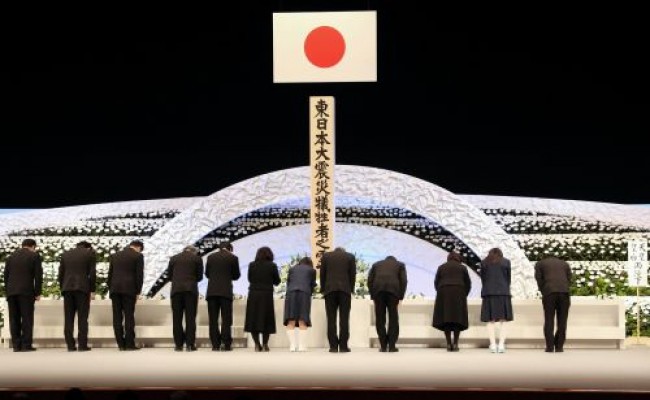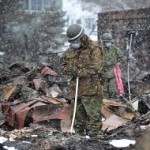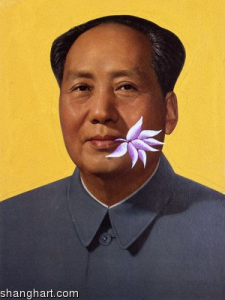Home » Asian History (Page 2)
Category Archives: Asian History
Prof. Lestz Awarded Alumni Medal for Excellence

During last week’s Trinity reunion weekend, History Professor Michael Lestz was awarded the Alumni Medal for Excellence. This medal is awarded annually to alumni who have made significant contributions to their professions, to their communities, and to Trinity College. Congratulations Michael!
Read the full citation here. (more…)
History 366 Interpreting the Ancient City: Angkor

“HIST 366: Interpreting the Ancient City: Angkor” was a hands on field investigation that traveled to Cambodia in May and June. Launched with the scholarship aid provided by the O’Neill Asia Cum Laude Endowment and the Charlotte Riggs Scholarship fund, ten Trinity students and four professors were able to travel to Phnom Penh and Siem Reap to do in depth study of ancient and modern Cambodia. History Department professors Michael Lestz and Dario Euraque, and Prof. Pablo Delano (Studio Arts) led the ten Trinity students to Phnom Penh and Siem Reap in a rich exploration of the themes of the course. As we visited material remains of Angkorean cities just north of Cambodia’s great freshwater lake accompanying the group as an associated faculty member was Dr. Rodolfo Pastor Fasquelle, who served twice as Minister of Culture of Honduras, between 1994 and 1998, and between 2006 and 2009. Faculty and students benefitted from Dr. Pastor Fasquelle’s vast knowledge of the ancient Mesoamerican world and especially the Mayan World Heritage site of Copan in Honduras.
In the News: The Cities Initiative

“Fueled by a desire to probe the connections between cities in this country and abroad, Trinity has launched a co-curricular initiative this academic year, “Cities: Global Urban Experience across Time & Space.” The lead professors are Dario A. Euraque, professor of history and international studies, and Garth Myers, Paul E. Raether Distinguished Professor of Urban International Studies. The half-credit course (COLL-131-01) is affiliated with 19 courses having urban themes. They include seven first-year seminars.
(more…)
History Faculty featured in The Trinity Reporter (Summer 2012)
Brianna Diaz of the Trinity Reporter (Spring/Summer 2012) published a feature on 6 faculty members of History Department to discuss writing history. She writes: “In 2012, four faculty members from Trinity’s History Department expect to publish new books. Additionally, two books published by history faculty during the past few years continue to be met with critical acclaim and translated into new languages. The Reporter asked each of these faculty members to comment on their books.” Read entire feature HERE.
(more…)
Prof. Bayliss’s Japan Travel Blog, Summer 2012
 “I’m back in Japan after a year away, and thus the blog is back too, after a long hiatus,” wrote Prof. Bayliss in late July. “My itinerary this time has me in Tokyo first, after which I will head back up north for another round of volunteer work plus interviews with a variety of people about their experiences on 3/11 and since, and their concerns (and hopes) for the future.” Here’s an excerpt from his first blog entry entitle, ‘Reactions to Fukushima, Part 1’: “I’ve arrived in Tokyo at a fascinating time. In previous posts, I’ve mentioned the concerns surrounding condition of Japan’s nuclear reactors, in particular their ability to withstand a disaster of the kind that hit the Fukushima Daiichi plant. Last summer and fall, the government ordered the shutting down all of Japan’s reactors, until their operators could prove compliance with “stress tests,” thus effectively taking Japan completely off nuclear power for the first time in decades. Although there were concerns over the criteria to be employed in determining compliance with the new government standards, in general this was a popular move with the Japanese people, especially as more and more information became known about the scope of radioactive contamination produced in the wake of the meltdowns at Fukushima Daiichi, and the system of collusion – bordering on corruption – between the nuclear power industry and the government that created the loose safety standards that led to the “unforeseen” catastrophe.”
“I’m back in Japan after a year away, and thus the blog is back too, after a long hiatus,” wrote Prof. Bayliss in late July. “My itinerary this time has me in Tokyo first, after which I will head back up north for another round of volunteer work plus interviews with a variety of people about their experiences on 3/11 and since, and their concerns (and hopes) for the future.” Here’s an excerpt from his first blog entry entitle, ‘Reactions to Fukushima, Part 1’: “I’ve arrived in Tokyo at a fascinating time. In previous posts, I’ve mentioned the concerns surrounding condition of Japan’s nuclear reactors, in particular their ability to withstand a disaster of the kind that hit the Fukushima Daiichi plant. Last summer and fall, the government ordered the shutting down all of Japan’s reactors, until their operators could prove compliance with “stress tests,” thus effectively taking Japan completely off nuclear power for the first time in decades. Although there were concerns over the criteria to be employed in determining compliance with the new government standards, in general this was a popular move with the Japanese people, especially as more and more information became known about the scope of radioactive contamination produced in the wake of the meltdowns at Fukushima Daiichi, and the system of collusion – bordering on corruption – between the nuclear power industry and the government that created the loose safety standards that led to the “unforeseen” catastrophe.”
Read entire blog entries of his recent travels to Japan at: Where Does It All Go: An Aftermath Travelogue.
Anniversary of the Tsunami in Japan

By: Prof. Jeff Bayliss
I promise to keep this short. I’ll have to, because it’s already late, and I intend to post this before I call it a night and set the clocks forward for the spring. But I won’t do that until sometime after 12:46am here, at the very earliest. That will be the exact moment, one year ago, when the quake that spawned the killer tsunami waves struck, and irrevocably altered life for so many people in northeastern Japan. 12:46am in Connecticut is 2:46pm in Japan. As of the morning of March 11th, 2012 in Japan, the figures from the disaster stood as follows: 15,854 confirmed dead, 3,155 still missing but officially presumed dead, and 343,935 dislocated and living in temporary housing facilities or other arrangements. In addition to these figures, it is necessary to bear in mind that these numbers represent whole communities along the coast of northeastern Japan; communities that are nowhere near making a recovery after a year. Some may never do so, especially in the areas closest to the failed Fukushima Daiichi nuclear power plant. The disaster goes on. So much so, in fact, that it almost doesn’t seem to make sense to speak of an “anniversary” – although much has changed since. So, as I sit down to watch the NHK satellite feed tonight, as we press on toward 2:46pm in Japan, here are a few thoughts, by way of commemoration. Most of what I would like to say, though, concerns not how far things have come in a year, but how much further they have yet to go. This is not to be overly pessimistic. Reconstruction is happening, because the survivors won’t let it be otherwise. Still, in the very act of “reconstructing” one finds the ongoing toll of the disaster at every turn.
Read entire blog post HERE.
Lecture: Recovery and Clean-Up Stalls in Wake of Japan’s Earthquake and Tsunami
 “HARTFORD, CT, November 16, 2011 – The devastation from the magnitude 8.9 earthquake that struck northeastern Japan in March of this year is almost unimaginable, with tens of thousands of people having fled, leaving the poor and the elderly to fend for themselves and gigantic piles of debris everywhere. That was the bleak picture painted by Jeffrey Bayliss, associate professor of history and an expert on Japan and Japanese culture and history, and Amelia Wei ’12, who spent a month in Japan during the summer conducting research concerning the recovery and relief efforts. Bayliss and Wei spoke at a November 15 Common Hour event sponsored by the Center for Urban and Global Studies.
“HARTFORD, CT, November 16, 2011 – The devastation from the magnitude 8.9 earthquake that struck northeastern Japan in March of this year is almost unimaginable, with tens of thousands of people having fled, leaving the poor and the elderly to fend for themselves and gigantic piles of debris everywhere. That was the bleak picture painted by Jeffrey Bayliss, associate professor of history and an expert on Japan and Japanese culture and history, and Amelia Wei ’12, who spent a month in Japan during the summer conducting research concerning the recovery and relief efforts. Bayliss and Wei spoke at a November 15 Common Hour event sponsored by the Center for Urban and Global Studies.
(more…)
Professor Bayliss Reflects on Japan and its Future

In the summer of 2011, Professor Jeff Bayliss traveled to Japan to assess the social, political, economic and cultural impact of the tsunami in Japan.
Here’s an excerpt from his blog: Where Does It All Go?: An Aftermath Travelogue:
“One thing that struck me repeatedly while I was in Tohoku was how the disaster seemed to still be going on for many of the people in the hisaichi, and in many different ways. I’m sure it seems odd to put it like that. The last waves have of course long since receded, and in most areas the chaotic clutter of debris has at least been cleared and placed in tremendous piles that represent the first big step in salvaging order from chaos. Even for the most dislocated of the survivors, the hinanjo shelters too are poised to become a thing of the past, meaning that they will be on their way to regaining their privacy and – with any luck – financial independence as well. And yet, the landscape in the hisaichi still looks like a bizarre moonscape in parts, with busted buildings and the naked foundations of now absent structures everywhere one looks. On the psychological level, too; survivors still seem to want to talk about the early days, whether to “outsiders” or among themselves, as if the things they experience are still replaying in their heads. Many do so in a way that suggests a sense of awe at what they witnessed, but otherwise they seem to have come to terms with it. Deep down, however, I doubt this is the case; they replay the events because they are still searching for something in them, some element of meaning, perhaps, that once found will allow them to relegate March 11th and its aftermath to the realm of memories that don’t have to constantly be recalled and relived – if that is possible for events of such enormity. For others, however, the need to recall and relive what they say is more like the curse we outsiders might expect it to be; they would rather forget, but can’t.”
For more insight and information, go HERE.
China Odyssey: Reflections on Shanghai Art & the Jade Buddha Temple
 By: Bo Hershey, Class of 2012
By: Bo Hershey, Class of 2012
The Shanghai Propaganda Poster Art Centre provides viewers with a place of historical reference. When viewing the various forms of Chinese propaganda one sees that each period had its unique style. When looking even deeper one finds that every poster tells a different story. When observing the propaganda posters of the Cultural Revolution the viewer is provided with primary source of that era. These posters are not similar to contemporary art forms of the 21st century. Instead they speak to the sensibilities of that time. The collection of posters found at the Propaganda Center shows the kinds of art forms accepted under Mao. The visual language of each poster shows that political propaganda was the major art form of that era. Each poster seems to have the same kind of political tone. Yet the themes of each of the posters seem to tell a different story. A few are a glorification of Chairman Mao. Here the posters show Mao as a cult figure. When looking at these posters one can see similarities to the Spanish baroque paintings that presented the Hapsburgs as regal leaders of their domain. The poster artists of the Mao era follow a similar technique by making Mao the central figure of the poster. The anti-Western bias is another interesting feature found in many of the posters. These kinds of posters were used as a way to change the viewers perception in a negative light. Propaganda in many ways is an art form whose purpose is to influence the viewer into believing the story presented. Basically, the posters of this era are no different from those other art works. The role of the viewer is to understand the artist’s objective and make judgments that question the reason for its creation.
(more…)

